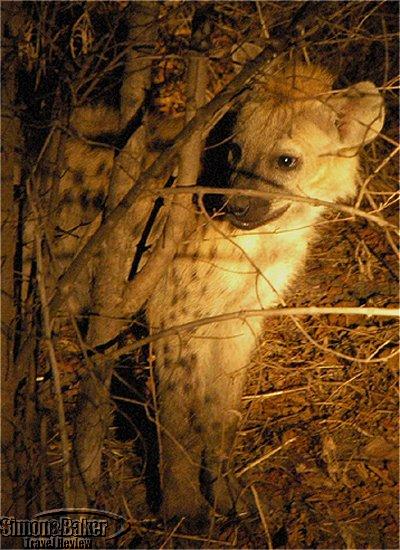


While elephants, buffalos, lions and leopards abounded in the park, and pods of fifty or more hippos were frequent in the river, rhinos were sadly poached to extinction in the 1980’s. Small herds of several varieties of antelopes ranging from the tiny Sharpe grysbok to the great kudu with its majestic spiral horns, impala, waterbuck, bushbuck, and the honey-colored puku rarely seen outside of the valley, were common; as were the Thornicroft giraffe and Crawshay zebra, both indigenous to the park.
Given the abundance of game roaming this spectacular landscape, it was easy to understand how the famed Zambian “walking safari,” which originated in the park over half a century ago, flourished to become one of the most prized game viewing experiences in southern Africa. This led to the development of a number of small seasonal bush camps in the eastern part of the park, in close proximity to the river. These camps were run by a few of the most reputed safari operators in the country. The camps I visited, most notably Kuyenda, Chamilandu and Chindeni, were memorable for the outstanding expertise of their guides as well as the high quality of their accommodations and warm hospitality.
Because of its remote location, the South Luangwa National Park was not as readily accessible from North America and Europe as other better known southern Africa safari destinations. This isolation limited the number of visitors, which further enhanced my thrill of feeling transported to an Africa that time had forgotten. Judging by the astonishing ratio of return visitors I came across during my visit, I suspected the Luangwa walking safari experience to be highly addictive!
Cost Of Visiting Reasonable
Currency The currency of Zambia, the kwacha, had an exchange rate of approximately 4000 kwachas for one U.S. dollar at the time of my visit.
Electrical Current 220 Volts/50 Hz. A NW-135C adapter was necessary when using electrical outlets (the kind used in the U.K.).
Health And Vaccinations There were no mandatory inoculations for travel to Zambia at the time of my visit. My local health clinic, following the Center for Disease Control (CDC) guidelines, recommended an up-to-date inoculation schedule for meningitis, hepatitis, rabies, sleeping sickness, tetanus and typhoid fever; as well as visitor precautions for AIDS and preventive medication for malaria. Because I visited Zambia at the end of the dry season, I found that mosquito repellant was usually not necessary. However, in this tropical climate, high protection sunscreen was a daily necessity.
Location The South Luangwa National Park was located in the north eastern corner of Zambia, near the borders of Malawi and Mozambique. Mfuwe, the main entrance to the Park, was approximately 400 kilometers (250 miles) north east of Lusaka, the capital of Zambia.
Measures Metric system
Money Issues All prices in areas that catered to tourists, including airport taxes and park fees were quoted in U.S. dollars, alleviating the need to exchange currency. Because I couldn’t anticipate whether change could be made in U.S. dollars, I brought all the funds for incidentals, tips and souvenirs, in small U.S. denominations (mainly $1, $5 and $10). This ensured that I didn’t accumulate local currency along the way.
Technology All the lodges and camps offered running water. Electricity was permanently available at the lodges and on a limited basis at the camps. Cellular phone service and Internet access were available at the lodges. In the camps, the only available option was satellite phone.
Time GMT/UTC plus two hours (e.g. Continental European time)
Transportation The only way to get around in the Park was by all-wheel drive vehicles or on foot.
When To Visit The remote bush camps operated from May through October. They were closed during the green season when the saturated dirt paths became impassable bogs. The two permanent lodges operating in the park, the Mfuwe Lodge and the Chichele Presidential Lodge located within one hour’s drive from the Mfuwe entrance, remained open all year; catering mainly to birdwatchers during the green season, when migrant birds were said to visit in droves.
Shopping And Souvenirs The lodges and camps had some very limited souvenir shops, stocked mainly with locally decorated textiles and some woodcarvings.
Bird watching was equally outstanding, especially along the river where large flocks of waterfowl, such as yellow-billed and saddle-billed storks, crested cranes and great marabous, congregated. Meanwhile some of the steep banks appeared to be literally blooming with colonies of carmine bee-eaters.
ReviewersArticle and photographs by Josette King
Would You Visit This Destination Again? Yes





